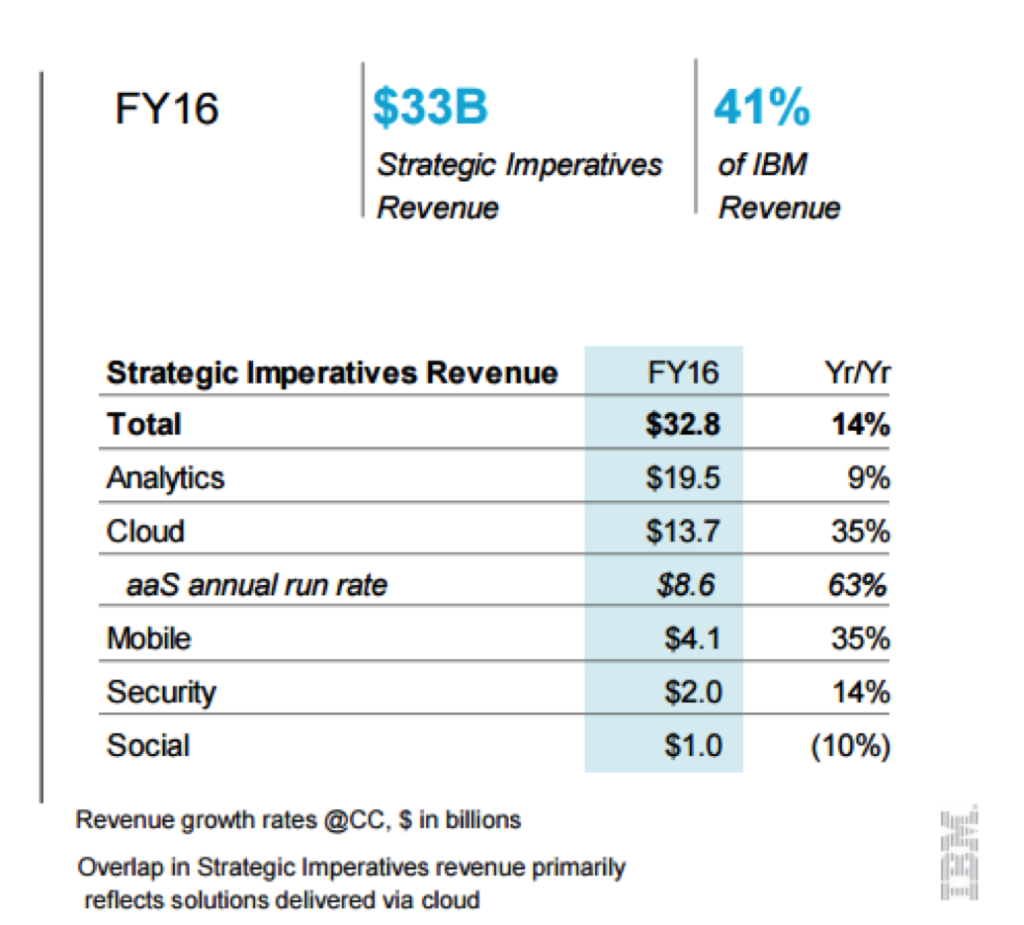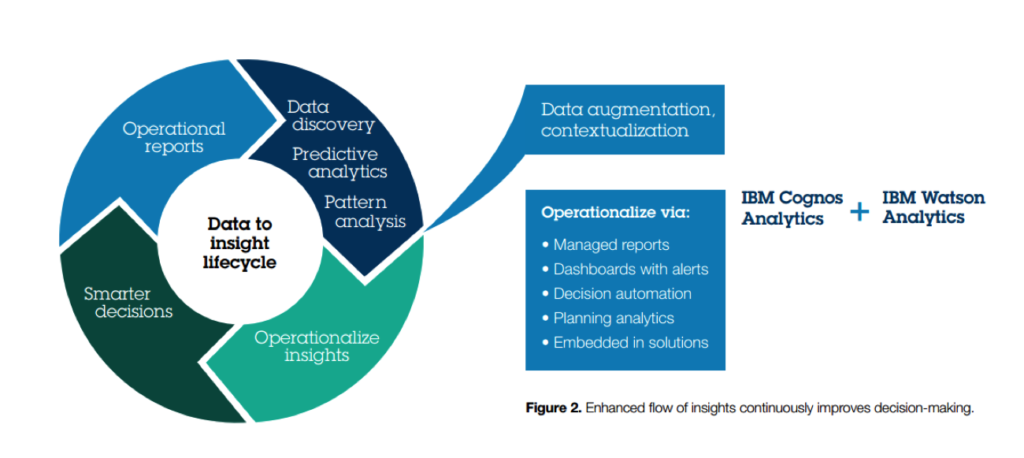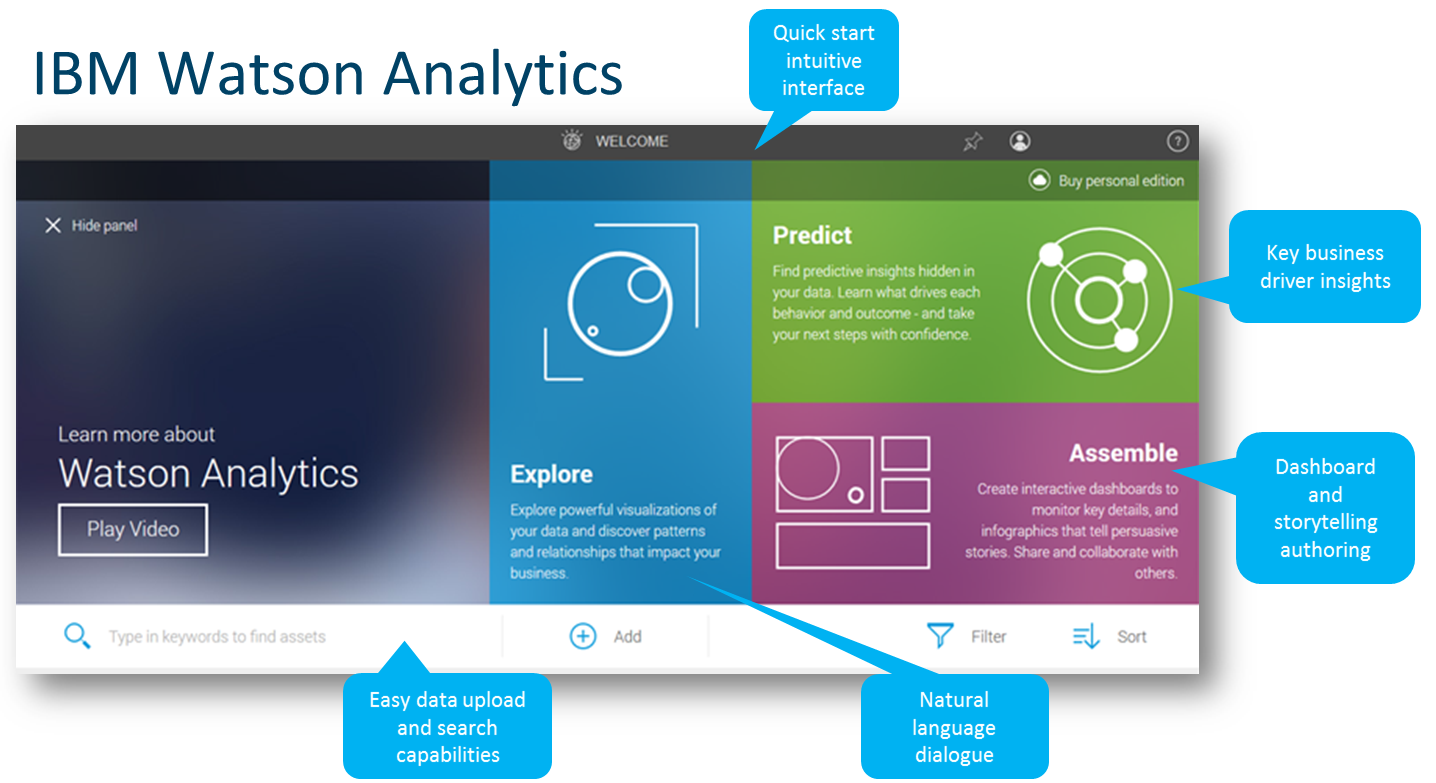IBM Analytics is a monster unit in its own right. In 2016, IBM reported $19.5 billion in revenues from the segment.
That’s more than the total revenue that a top tech company like Salesforce makes; in fact, it’s even more than what Amazon AWS, the leader in public cloud infrastructure, earns every year.
IBM Analytics grew 9% during the year, and will play a huge role IBM’s effort to stop its revenue decline and start posting quarterly growth numbers.
Considering IBM’s strong presence in cloud computing, one might easily mistake its nearly $20 billion annual revenues from Analytics to be cloud-based. In reality, it’s a mix of cloud and non-cloud revenue.
In 2016, IBM’s total cloud revenue was only $13.7 billion. So, at the very least, $5.8 billion of the $19.5 billion in Analytics revenues must have come from non-cloud sources.

IBM does have a wide range of Business Intelligence and Analytics products built around IBM Cognos Analytics, known in its previous avatar as Cognos BI and IBM Watson Analytics. Both these products have specific use cases, as well as some overlaps, but they can also complement each other’s capabilities. The gap may get smaller and smaller in the future but, for now, IBM thinks that both these products have enough reason to be standing alone.

Paul Hausser, of Envisn, Inc. says:
Where Watson works best:
Exploration of data focused on discovery and insight – Most often Watson Analytics is looking at a large amount of data and trying to discover how the data are related and what can be gleaned from it. Does it provide any new insight into what we already know about our business or this new area of knowledge?
Cognos Analytics:
Primary focus is on using systems of record data – This is what companies and organizations use to manage the enterprise on a daily basis. It represents the work the organization and its people do and most of the data comes from ERP or related systems.
The problem with Watson Analytics and its predictive capabilities is that a new user is easily confused about which IBM product will best suit them, and even how to go about deciding that.
Gartner, as part of its BI and Analytics Platform research, noted last year that:
“IBM’s Ability to Execute rating was affected by product gaps that exist in the current version of Watson Analytics. IBM received one of the most favorable Completeness of Vision placements on the Magic Quadrant, but was affected in part by confusing messaging across the broader IBM portfolio — which related to the use of the Watson brand and the fundamental difference between the Watson cognitive computing-based system and the Watson Analytics product — affecting its market awareness rating.”
Most of IBM’s existing analytics and cloud clientele are large-scale enterprises, companies with whom IBM will likely already have a relationship. Their sales teams will be pitching the products, helping companies identify the right fit and selecting the best one.
But in the SaaS world, things are different: you let your product do the talking, and your sales team only steps in when it is necessary.
Watson Analytics is a freemium product that’s available to everyone, so it’s absolutely essential that IBM make the product selection process easier to understand. That will go a long way in helping IBM expand Watson’s market reach, because there aren’t many comparable products around.
Nevertheless, IBM’s sales numbers clearly prove that the IBM Analytics unit has hit the sweet spot within the BI and analytics segment. The scale they have now achieved will help IBM continuously improve their products and make them stand out from the crowd.
Thanks for reading our work! We invite you to check out our Essentials of Cloud Computing page, which covers the basics of cloud computing, its components, various deployment models, historical, current and forecast data for the cloud computing industry, and even a glossary of cloud computing terms.



